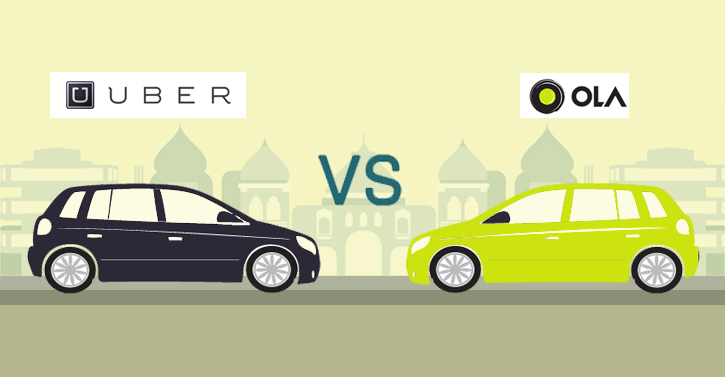By Meherzad Irani
The Ambassador car has halted production, and the old-guard taxis are facing a hostile takeover by the new breed, powered by nothing much more than a bunch of smart phone apps. The most ferocious of this lot in India are none other than domestic steed OlaCabs, and the international giant Uber.
Most of us have travelled at least once in Ola and Uber, even if just to use the free Rs200 Promo offer that we got using a friend’s referral code. This offer was first proposed by Ola and soon taken up by Uber. The main reason behind this was our mindset which makes us hesitant in trying something better by spending a little more, which was used as an effective marketing strategy by both the companies. Cab aggregators (or ride-hailing services) Ola (ANI Technologies Pvt. Ltd) and Uber Technologies Inc. have taken over the market, with their affordable rates and good customer services, in such a way that it has made the local auto-rickshaw and taxi drivers feel threatened. Previously ruled by Meru Cab Services, the ‘Radio Cab’ industry has now been taken over by Ola and Uber.
-
Birth, Growth and Expansion
Ola, a brainchild of Indian Institute of Technology-Bombay graduates Bhavish Aggarwal and Ankit Bhati, was founded in December 2010, in Bangalore. Starting with multiple services, such as out-station travel and hourly packages, it had a rather rough start since majority of their services were resulting in an overall loss in the market. However, soon after its launch, the company dumped all distractions to focus on point-to-point drops, much like its peer Uber, and soon sped past its predecessors. Meru’s revenue in the year ended March 2015 was Rs.280.57 crores against Ola’s Rs.418.25 crores.
Uber was a fledgling business in India until early last year, with just about 5% of the market share in January 2015. It had entered the Indian market with high end cars, but soon realised the potential of affordable cab services and started offering the same. It was already battling the establishment, trying to cope with the Reserve Bank of India’s directive mandating two-factor authentication for credit card payments, a major blow to its feted cashless payments, when the sexual assault of a woman in Delhi by a driver affiliated to Uber, triggered a regulatory backlash as well.
Later, in March 2015, Ola took over a smaller market rival Taxi For Sure which soon became a bust due the Uber sexual assault case demotivating citizens from taking Radio Cab services.
Till now the tide had been in the favour of Ola, but it is being taken over, with the rapid growth of Uber.
-
Price Wars
Uber and Ola have unleashed a price war which has resulted in a windfall for consumers and upped the stakes for investors.
In November 2015, when Ola launched the Micro service at just Rs6/km, it actually launched the cheapest fare rate ever, cheaper even than the local auto-rickshaw.
With seasonal discounts and promotion codes, both Uber and Ola started attracting more and more customers to a point where their demand surpassed their supply, leading to the introduction of surge pricing.
-
Investments
Both Ola and Uber need more cash as they invest heavily in customer acquisition and retention, driver incentives, and a steady supply of new cabs. Analysts say that Ola, being the largest Indian service provider, can seek higher funds as compared to Uber, for their growth in Indian markets. In India, where smartphone usage is still only at 30 percent, and regulations and risks keep cropping up, the companies have started venturing in international markets, especially China, where one of Ola’s strategic investors, Didi, is flush with funds, having raised $7 billion in June 2016 from a clutch of investors, including Apple Inc. and China Life Insurance Co.
Overall, we can conclude that because of this tough competition we, the commuters, have benefited from the affordable rates and amazing customer service. After years of dealing with the tantrums of local taxis we don’t mind paying the price for the service. The customer is finally feeling like the king.
P.C. Abhishek Tripatthi




